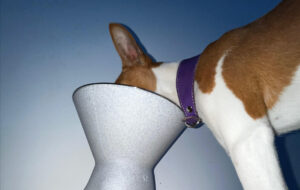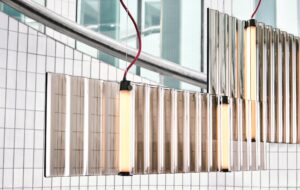|
|
||
|
The first “man-sized” Barbie dreamhouse in Europe has opened in Berlin, thus confirming design’s current obsession with the “life-size” and with “experience” (concepts that owe something to Cedric Price’s Fun Palace and to the ideas of the Situationists). And the life-sized house is certainly an experience. The inflatable pink tent stands next to Alexanderplatz, the military parade square that was, and at the back of the new mall called Alexa, which many thought the ugliest building in the area. Now there’s something to top the neoclassical kitsch. At the entrance, the first association is with Lewis Carroll’s Alice in Wonderland: there is a gigantic shoe which is also a fountain, around which little girls run and cry. Inside the dream house, the colour pink reaches levels of saturation surpassing the effects of LSD or other psychedelics; I felt as if I was hallucinating, which is, I suppose, the desired effect. The idea seems to be to “help” girls to act out their fantasies; fantasies for which Barbie is an early catalyst. The house is constructed as a magical maze, a sequence of rooms apparently unveiling a little girl’s desires. We start from the kitchen, of course, but in this vast room the only thing you can make is a cake: a small cake, a medium-sized cake, or a cake the size of a small car. This is the land of “retro-feminism” where the cupcake is king. The dreamhouse seems in a state of indecision as to whether Barbie is a princess or an ordinary woman, a housewife or an astronaut. But who can blame her? From the salon, which contains a piano, a horse, a 10sq m bed and a sofa, we can gather that she likes domesticity and, like all of us, all she ever thinks is shoes and handbags. There are alleys of clothes and shoes and bags occupy several corridors. It’s not just Barbie who’s lost her head shopping; we’re being prepared to buy, too. There are lots of pink shelves, on which endless versions of dolls are packed. Barbie’s Dreamhouse is, unsurprisingly, a life-sized shop. An the construction of the house is so tacky that if you lift your heads we can see that the plastic walls aren’t even touching the Styrofoam ceiling. The crudeness with which these adult desires are projected on to girls is grim. The organisers, seemingly aware that this might be too adult a form of entertainment, have added some obviously childish elements, such as slides, ponies or prima ballerinas. Girls can also learn about the reality principle here, since jewellery is secured to the tables, dolls are behind the glass, the toilet doesn’t work and the smiley blonde women sitting next to it, waiting for a manicure, are mannequins. If they pay more, visitors can walk on a catwalk or pretend to sing on a stage. Yet, in the middle there’s a gigantic diamond ring – because Barbie is a traditionalist. If it were really possible for someone to live in Barbie: The Dreamhouse Experience, they’d certainly lose the will to live. It’s even more curious in retrospect that a cover of an AJ issue about women in architecture, featured Barbie dressed, rather like Zaha, in an angular shawl. (Since the two have nothing in common, casual sexism seemed to be the only link.) Was it really mocking the American Institute of Architects’ praise for Architect Barbie as a role model? And what would that cover star think of this terrifying dream house? Barbie: the Dreamhouse Experience, Alexanderplatz, Berlin, Until 25 August 2013, then on tour. www.barbiedreamhouse.com |
Image EMS/Sven Darmer
Words Agata Pyzik |
|
|
||

















